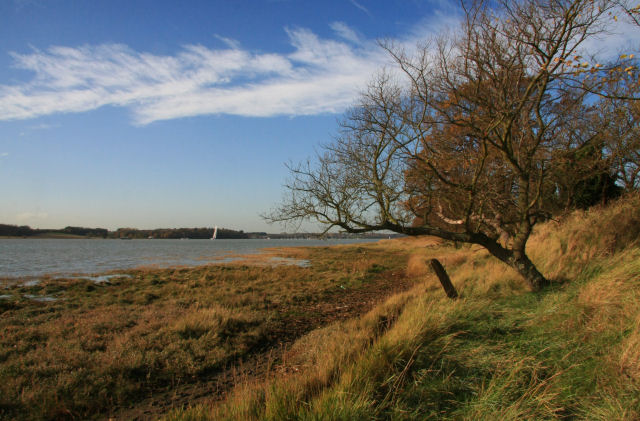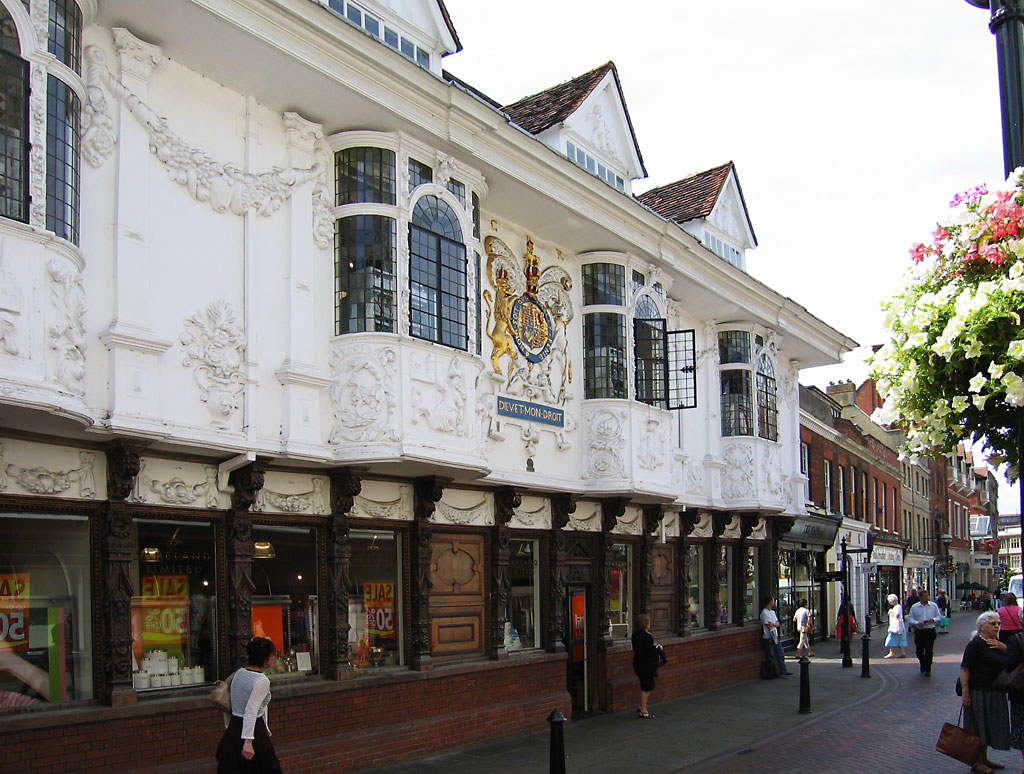|
Pipers Vale Pool
Pipers Vale is a 19.7 hectare Local Nature Reserve on the southern outskirts of Ipswich in Suffolk. It is owned and managed by Ipswich Borough Council. This site on the bank of the River Orwell is part of Orwell Country Park. Its diverse habitats include heath, reedbeds, scrub and alder carr. Over 100 bird species have been recorded here, including redwings, Eurasian whimbrel, whimbrels and bullfinches. There is access from Gainsborough Lane. Pipers Vale Pool Pipers Vale Pool () was an outdoor swimming venue opened on 12 June 1937 and replaced the West End Bathing Place, which had closed in 1936 due to fears that it was polluting the River Orwell. The pool was designed by County-Borough's Engineer Edward McLauchlan and constructed at a cost of £8000. The pool consisted of a main pool and a smaller paddling pool. The main pool was 40 yards (45.72m) long, 12.5 yards (11.43) wide and depths between 2 feet 6 inches (0.76m) to 9 feet (2.7m). The pool boasted a 1m spring board as wel ... [...More Info...] [...Related Items...] OR: [Wikipedia] [Google] [Baidu] |
Orwell Bridge
The Orwell Bridge is a concrete box girder bridge just south of Ipswich in Suffolk, England. Opened to road traffic in 1982, the bridge carries the A14 road (England), A14 road (formerly the A45 road, A45) over the River Orwell. History Design The main span is 190 metres which, at the time of its construction, was the longest pre-stressed concrete span in use in the UK. The two spans adjacent to the main span are 106m, known as anchor spans. Most of the other spans are 59m. The total length is 1,287 metres from Wherstead to the site of the former Ravenswood, Ipswich, Ipswich Airport. The width is 24 metres with an air draft (nautical), air draft of 43 metres; the bridge had to be at least 41 metres high. The approach roads were designed by CH Dobbie & Partners of Cardiff, later bought by Babtie, Shaw and Morton then Jacobs Engineering Group, Jacobs in 2004. The bridge is constructed of a pair of continuous box girder bridge, concrete box girders with expansion joints that allow ... [...More Info...] [...Related Items...] OR: [Wikipedia] [Google] [Baidu] |
River Orwell
The River Orwell flows through the county of Suffolk in England from Ipswich to Felixstowe. Above Ipswich, the river is known as the River Gipping, but its name changes to the Orwell at Stoke Bridge, about half a mile below where the river becomes tidal by Bobby Robson Bridge on West End Road. It broadens into an estuary at Ipswich, where the Ipswich dock has operated since the 7th century, and then flows into the North Sea at Felixstowe, the UK's largest container port, after joining the River Stour at Shotley forming Harwich harbour. The large Orwell Bridge carries the A14 trunk road over the estuary to the south of Ipswich. Name In the name ''Orwell'', ''Or-'' comes from an ancient river-name—probably pre-Celtic; but ''-well'' probably indicates an Anglo-Saxon naming. In ''A tour through England and Wales'', written in 1722, Daniel Defoe calls the river "Orwel" (though he does this inconsistently). He also mentions that "a traveller will hardly understand me, especia ... [...More Info...] [...Related Items...] OR: [Wikipedia] [Google] [Baidu] |
Ipswich
Ipswich () is a port town and Borough status in the United Kingdom, borough in Suffolk, England. It is the county town, and largest in Suffolk, followed by Lowestoft and Bury St Edmunds, and the third-largest population centre in East Anglia, after Peterborough and Norwich. It is northeast of London and in 2011 had a population of 144,957. The Ipswich built-up area is the fourth-largest in the East of England and the 42nd-largest in England and Wales. It includes the towns and villages of Kesgrave, Woodbridge, Suffolk, Woodbridge, Bramford and Martlesham Heath. Ipswich was first recorded during the medieval period as ''Gippeswic'', the town has also been recorded as ''Gyppewicus'' and ''Yppswyche''. It has been continuously inhabited since the Anglo-Saxon settlement of Britain, Saxon period, and is believed to be one of the Oldest town in Britain, oldest towns in the United Kingdom.Hills, Catherine"England's Oldest Town" Retrieved 2 August 2015. The settlement was of great eco ... [...More Info...] [...Related Items...] OR: [Wikipedia] [Google] [Baidu] |
Suffolk
Suffolk ( ) is a ceremonial county in the East of England and East Anglia. It is bordered by Norfolk to the north, the North Sea to the east, Essex to the south, and Cambridgeshire to the west. Ipswich is the largest settlement and the county town. The county has an area of and a population of 758,556. After Ipswich (144,957) in the south, the largest towns are Lowestoft (73,800) in the north-east and Bury St Edmunds (40,664) in the west. Suffolk contains five Non-metropolitan district, local government districts, which are part of a two-tier non-metropolitan county administered by Suffolk County Council. The Suffolk coastline, which includes parts of the Suffolk & Essex Coast & Heaths National Landscape, is a complex habitat, formed by London Clay and Crag Group, crag underlain by chalk and therefore susceptible to erosion. It contains several deep Estuary, estuaries, including those of the rivers River Blyth, Suffolk, Blyth, River Deben, Deben, River Orwell, Orwell, River S ... [...More Info...] [...Related Items...] OR: [Wikipedia] [Google] [Baidu] |
Ipswich Borough Council
Ipswich Borough Council is the local authority for Ipswich, a non-metropolitan district with Borough status in the United Kingdom, borough status in Suffolk, England. It is the second tier of a two-tier system, fulfilling functions such as refuse collection, housing and planning, with Suffolk County Council providing county council services such as transport, education and social services. The council has been under Labour Party (UK), Labour majority control since 2011. It meets at Ipswich Town Hall and has its main offices at Grafton House. History Ipswich was an ancient borough. In the Domesday Book of 1086 it was described as having Burgess (title), burgesses, implying some form of borough status. The town's first known charter was issued by John, King of England, King John in 1200. The borough was reformed to become a municipal borough in 1836 under the Municipal Corporations Act 1835, which reorganised many boroughs across the country to a standardised model. It was then g ... [...More Info...] [...Related Items...] OR: [Wikipedia] [Google] [Baidu] |
Orwell Country Park
Eric Arthur Blair (25 June 1903 – 21 January 1950) was an English novelist, poet, essayist, journalist, and critic who wrote under the pen name of George Orwell. His work is characterised by lucid prose, social criticism, opposition to all totalitarianism (both authoritarian communism and fascism), and support of democratic socialism. Orwell is best known for his allegorical novella ''Animal Farm'' (1945) and the dystopian novel ''Nineteen Eighty-Four'' (1949), although his works also encompass literary criticism, poetry, fiction and polemical journalism. His non-fiction works, including ''The Road to Wigan Pier'' (1937), documenting his experience of working-class life in the industrial north of England, and ''Homage to Catalonia'' (1938), an account of his experiences soldiering for the Republican faction of the Spanish Civil War (1936–1939), are as critically respected as his essays on politics, literature, language and culture. Orwell's work remains influential i ... [...More Info...] [...Related Items...] OR: [Wikipedia] [Google] [Baidu] |
Alder Carr
An alder carr is a particular type of carr, i.e. waterlogged wooded terrain populated with alder trees. They can be found across the United Kingdom, sometimes attracting Ash trees should they become drier. Many have developed alongside streams in the New Forest, where the Alder's capacity to thrive in a water logged environment allows them to become the dominant species of tree in these areas. The presence of particular bacteria, Frankia alni, enables their root systems to extract nitrogen from the air, thus making up for the lack of nitrogen in waterlogged soil. Alder carrs have often been coppiced, whereby cutting away growth at ground level encourages new trunks to grow at ground level. This means the wood can be repeatedly harvested. This wood can then be used to make water pipes, wooden pumps, as well as piles under bridges. Other uses have included charcoal for making gun powder, and filters for gas masks. Examples * Alder Carr, Hildersham * Alderfen Broad * Fawley For ... [...More Info...] [...Related Items...] OR: [Wikipedia] [Google] [Baidu] |
Redwing
The redwing (''Turdus iliacus'') is a bird in the thrush family, Turdidae, native to Europe and the Palearctic, slightly smaller than the related song thrush. Taxonomy and systematics This species was first described by Carl Linnaeus in his 1758 10th edition of ''Systema Naturae'' under its current scientific name. The English name derives from the bird's red underwing. It is not closely related to the red-winged blackbird, a North American species sometimes nicknamed "redwing", which is an icterid, not a thrush. The binomial name derives from the Latin words ''turdus'', "thrush", and ''ile'' "flank". About 65 species of medium to large thrushes are in the genus ''Turdus'', characterised by rounded heads, longish, pointed wings, and usually melodious songs. Although two European thrushes, the song thrush and mistle thrush, are early offshoots from the Eurasian lineage of ''Turdus'' thrushes after they spread north from Africa, the redwing is descended from ancestors that ... [...More Info...] [...Related Items...] OR: [Wikipedia] [Google] [Baidu] |
Eurasian Whimbrel
The Eurasian or common whimbrel (''Numenius phaeopus''), also known as the white-rumped whimbrel in North America, is a wader in the large family Scolopacidae. It is one of the most widespread of the curlews, breeding across much of subarctic Palearctic, Asia and Europe as far south as Scotland. This species and the Hudsonian whimbrel have recently been split based on genetic and morphological differences as well as no overlap in breeding ranges, although some taxonomic authorities still consider them to be conspecific. Taxonomy The Eurasian whimbrel was Species description, formally described by the Swedish naturalist Carl Linnaeus in 1758 in the 10th edition of Systema Naturae, tenth edition of his ''Systema Naturae'' under the binomial nomenclature, binomial name ''Scolopax phaeopus''. It is now placed with the curlews in the genus ''Curlew, Numenius'' that was introduced by the French ornithologist Mathurin Jacques Brisson in 1760. The genus name ''Numenius'' is from Ancient G ... [...More Info...] [...Related Items...] OR: [Wikipedia] [Google] [Baidu] |
Bullfinch
Bullfinch is a name given to two groups of passerine birds. True bullfinches The true bullfinches are thick-billed finches in the passerine family Fringillidae. They comprise the genus '' Pyrrhula''. These birds are distributed across Asia and Europe mainly in temperate forests, and exclude similar-looking birds found in the Americas. They Old World ''Pyrrhulae'' include the following: * Eurasian bullfinch, ''Pyrrhula pyrrhula'' * Brown bullfinch, ''Pyrrhula nipalensis'' * White-cheeked bullfinch, ''Pyrrhula leucogenis'' * Orange bullfinch, ''Pyrrhula aurantiaca'' * Red-headed bullfinch, ''Pyrrhula erythrocephala'' * Grey-headed bullfinch, ''Pyrrhula erythaca'' * Azores bullfinch, ''Pyrrhula murina'' New World tanagers There is an unrelated group of New World passerine A passerine () is any bird of the order Passeriformes (; from Latin 'sparrow' and '-shaped') which includes more than half of all bird species. Sometimes known as perching birds, passerines generally h ... [...More Info...] [...Related Items...] OR: [Wikipedia] [Google] [Baidu] |
West End Bathing Place
West End Bathing Place was an outdoor swimming venue in Ipswich, Suffolk. Location and features A bathing area for the West End of Ipswich was discussed as early as 1888 and was finally constructed in 1893 by the Ipswich Corporation. The lagoon was excavated from the land beside the River Gipping and had a concrete bottom. The depth of the pool was between 3 and 10 feet. The bathing place was open from 08:00 to sunset on weekdays and 06:00 to 10:00 on Sundays. Wednesdays from 08:00 to sunset and Fridays from 08:00 to 13:00 were reserved for ladies-only swimming. Maps show the bathing place as early as 1902, located where the freshwater of River Gipping meets the brackish River Orwell, close to the southern end of the now Sir Alf Ramsey Way. The bathing place was at a natural part of the river that filled at high tide to provide ideal shallow swimming. The Ipswich Swimming Club are known to have practiced there in 1913, where they held their West End Bathing Place plunging comp ... [...More Info...] [...Related Items...] OR: [Wikipedia] [Google] [Baidu] |






